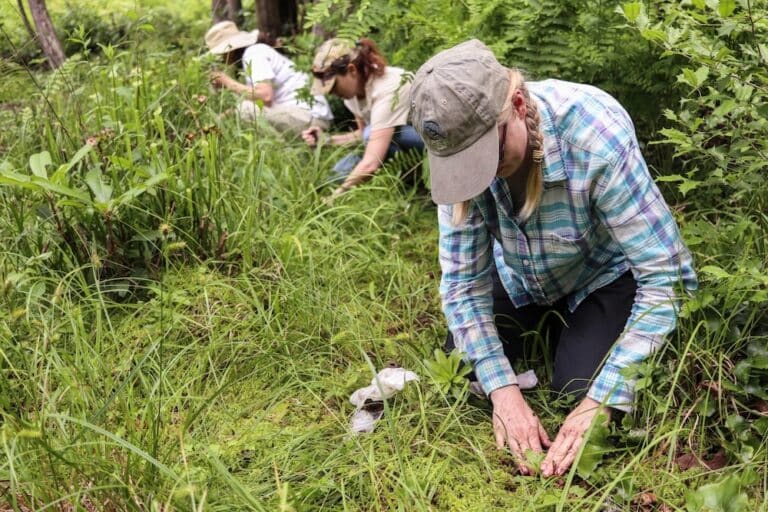6. Habitat management and restoration: State agency staff conduct prescribed burns and improve habitat through selective harvesting, invasive species removal, native species cultivation and many other habitat projects on state lands that benefit wildlife. These efforts help populations flourish, while ensuring hunters and wildlife watchers have species to pursue.
7. Research, data collection and analysis: Between 2019 and 2021, 67 studies that examined public interest in wildlife management, conservation, and participation were funded by P-R funds. These studies help states manage wildlife and wild places to ensure public satisfaction.
8. Wildlife management and restoration: Over 500 species of wild birds and mammals are managed with P-R funds. Since 1987, 16 states have developed nearly 90 projects related to black bear conservation. Managing wildlife populations helps keep populations and ecosystems in balance.
9. Facility and infrastructure maintenance: State agency staff create and maintain roads, trails, campgrounds, restrooms and other facilities to ensure participants can access and enjoy public lands safely.
10. Wildlife health: Thirty-eight state fish and wildlife agency laboratories monitor wildlife disease. Over $66 million was spent monitoring wildlife health in 2021-2023. Additionally, 138 grants were awarded to monitor wildlife disease in 2021-2023. These efforts sustain wildlife populations and ensure their longevity for future generations.
P-R funds are fundamental in growing the industry, sustaining wildlife populations and meeting the mission of all state fish and wildlife agencies. Americans can see state wildlife agencies working year-round on projects and operations like those outlined above.
Projects Close to Home, Wherever Home Is
Although these projects and efforts may seem big-picture, Wilkes encourages folks to look at the concept from an individual perspective within their home state. For example, he lives in Kentucky with his wife and three children. They immerse themselves in the outdoors and more specifically, the archery world as much as possible. They bowhunt, bowfish and shoot at their local archery range. Their oldest son even participates in the NASP program through his school. Wilkes said FET funds were vital to the recovery of species like whitetail deer across the country and in the state. The population likely dipped below 1,000 individual deer in the early 1900s and now the state’s herd hovers around 1 million. It’s apparent many of the things they do outdoors have a connection to the funds generated through the P-R Act.
“When I think about what the FET means for Kentucky Fish and Wildlife, it’s easy for me to see it right where I am,” he said. “I have a 10,000-acre WMA 45 minutes from my house that’s fully maintained by FET funds, and 10 minutes away is an archery range, free for public use, that was also built using P-R dollars. FET is the funding mechanism that keeps these places open and operational for me and my family.”
Because FET funds are so inextricably linked to the successful recovery and management of iconic game species like deer and turkey, it may be hard for some to understand all the different ways the funding is used. At the very least, Wilkes said, “If you visit a state WMA near you, it’s extremely likely that the state used federal excise taxes for the acquisition of that property but almost assuredly for continued maintenance and operation of that area for your use.”
To see how your state wildlife agency uses FET-funds, visit its website or give them a call. You can also look for text or the “Wildlife and Sport Fish Restoration” logo that designates a range or WMA that was funded using P-R dollars on signs posted in the area.
Wrapping Up
While it’s easy to see FET funds and FET-funded efforts are vitally important to the future of conservation and our hunting heritage, the outdoor industry must remain active in overseeing and protecting the program in the future. In an upcoming article, the ATA will outline the program’s evolution and potential future changes that will help maintain the sustainability of the funding resource.
The ATA provides its members with FET information, advice and advocacy. It created a free, comprehensive guide to federal excise taxes for its members and works directly with state wildlife agencies, the USFWS, the IRS and the U.S. Congress on FET issues.
If you have questions or concerns regarding federal excise taxes, please contact Dan Forster, ATA’s vice president and chief conservation officer, at (507) 233-8143 or danforster@archerytrade.org.



